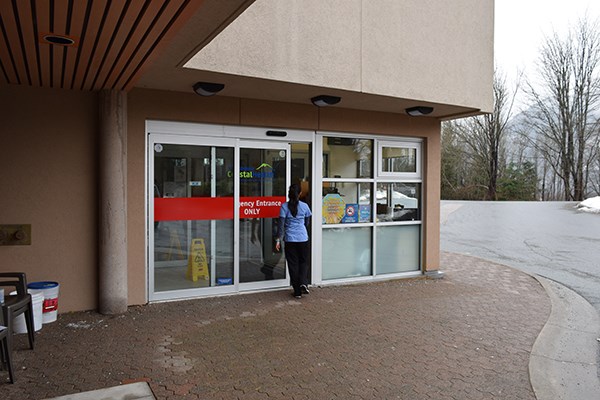The Squamish-Lillooet Regional Hospital District (SLRHD) has questions about who is supposed to pay for what when it comes to capital upgrades in the corridor.
In minutes from a meeting in January, the SLRHD board suggests not providing funding in response to a request from the Vancouver Coastal Health (VCH) because the board viewed the request as amounting to the downloading of provincial responsibilities onto the region.
Mayor Patricia Heintzman, who chairs the SLRHD board, told The Squamish Chief that the issue is that VCH is asking more money upfront and for projects that might not be a regional responsibility.
Typically, the region pays approximately $260,000 each year for the capital projects from its tax base in the region. The general formula is that it covers 40 per cent while VCH covers 60 per cent from provincial funds.
The health region now would have the SLRHD commit to $1,236,802 over a five-year period.
“It’s to better support our planning process,” said VCH senior media relations officer Anna Marie D’Angelo.
She said Vancouver Coastal Health traditionally has had good relations with the regional hospital districts, adding that it has also wanted more long-term planning.
The amount of the request over five years would actually be slightly less than the average annual contribution of over five years of just over $1.3 million, but Heintzman said the problem is that it limits what the regional hospital board can commit to, in the event new needs arise, by tying up funding for five years.
“We need to know well in advance. We need to map out five years in advance,” she said.
In addition, there are questions about what kind of projects should be funded. Heintzman said the understanding is that these should be regionally based “enhancement” projects – for example a CT scanner – rather than paying for work such as replacing elevators at a hospital.
“We’re at sort of a … philosophical struggle right now,” she said. “It’s a diversion of funds away from what we think is the intended purpose of the regional hospital district.”
The concern is that some of the requests appear to be more related to work that the regional board feels should be built into Vancouver Coastal Health’s regular capital costs. The specific requests cover pharmacy equipment at all facilities, as well as some upgrades at Squamish General Hospital for the electrical and oxygen source supply systems.
In response, the SLRHD board has declined the request to commit to the longer-term funding until it can clarify questions.
Heintzman understands that with health funding making up such a large portion of the provincial budget, it is little surprise the province and its health regions might be looking for ways to reduce their share of funding, but she does not think it should come at the expense of the regional tax base.
“They are trying to look for efficiencies,” she said, adding, “We have to make sure that 60 per cent funding is coming from the province.”



